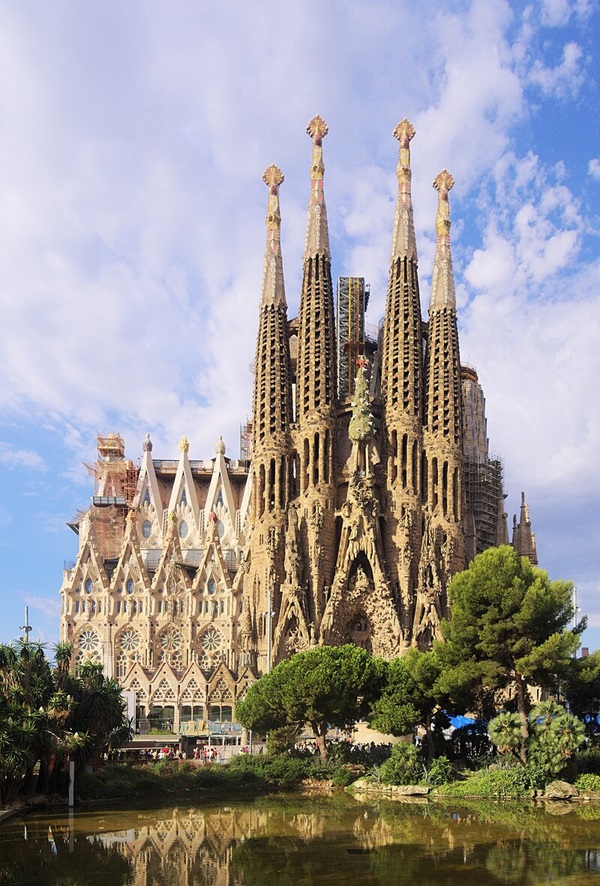Written by: Saram Maqbool
Posted on: April 16, 2024 |  | 中文
| 中文
The Blue Mosque in Turkey is a testament to traditional mosque architecture
Architecture is much more than just the art of designing buildings to live and work in, but also an expression of one's values, morals and beliefs. It is seen in the form of public buildings that aim to showcase a nation’s strength and vision, or in religious structures that have a far deeper involvement of spirituality and metaphor. Studying religious architecture is fascinating, not only because of how each major belief system differs in its approach to designing places of worship, but also due to the similarities that inherently exist between them. From the towering minarets of mosques to the spires of cathedrals, most religious architecture aims to achieve a sense of verticality to depict a spiritual transcendence. Couple this with specific beliefs about the universe and the Creator, and we get highly symbolic buildings that inspire awe whenever you set foot inside them.
Mosques are central to worship by Muslims, and their architecture reflects the core beliefs of the faith. The minaret, a tall tower from which the call to prayer is announced, symbolizes the Muslim community's unity and the invitation to worship, for the vertical element is predominant in religious buildings. Even though the minaret is no longer needed to call for prayers, thanks to modern technology, it remains a distinguishing characteristic of a mosque’s design. The dome often found atop the prayer hall, represents the universe and the expanse of God's creation. It is this part of the mosque that often creates the most significant sense of calm, grounding a person and making them realize that Allah's universe is much bigger than themselves. Inside the mosque, geometric patterns in the form of breathtaking muqarnas adorn walls and ceilings, symbolizing the infinite nature of Allah. Calligraphy, featuring verses from the Quran, embellish the mosque's interior, reinforcing the importance of scripture in Islamic life.
Christian architecture varies widely, with styles ranging from Romanesque, Gothic to modern. Cathedrals and churches often feature a cruciform layout, symbolizing the crucifixion of Jesus Christ. Instead of calligraphy that adorns mosques, are stained glass windows visually depicting biblical narratives and saints, serving as visual aids for worshippers. The spire, reaching towards the heavens, represents the aspiration for spiritual transcendence. There is usually also a bell on top of the spire, making it similar in function to a minaret. The altar, situated towards the east end of the church, symbolizes the presence of Christ and the focal point of the Eucharist, a central sacrament in Christian worship. Churches and cathedrals rely heavily on visual storytelling, with sculptures and frescos often dominating the exterior facade.

The Sagrada Familia in Barcelona, designed by Antoni Gaudi, is an incredible example of Gothic church architecture
Hindu temples are renowned for their rich symbolism and intricate architecture. The temple's layout is designed to represent the cosmos, with the central sanctum symbolizing the womb of creation and housing the deity. The towering spire (shikhara) represents the sacred mountain, connecting the earthly realm with the divine. Carvings of gods, goddesses and mythical creatures adorn the temple walls, conveying stories from Hindu mythology and invoking divine blessings. The temple tank (pushkarini), serves as a symbol of purity and spiritual purification. Geometry plays a major role in how temples are designed, with mandalas often becoming the grid on top of which they are designed. Worshippers enter temples from the sun-facing east side, since that is considered blessed and is dedicated to Surya, the sun god.
Buddhist architecture is characterized by its simplicity, symmetry and serenity. Pagodas, also known as stupas, symbolize the Buddha's enlightenment and the path to spiritual awakening. Their circular shape represents the endless cycle of birth, death and rebirth. The tiered structure of pagodas signifies the stages of enlightenment, with the square base representing the earthly realm and the pinnacle symbolizing enlightenment. Inside Buddhist temples, statues of the Buddha and Bodhisattvas convey teachings of compassion, wisdom and mindfulness.
Across different faiths, religious architecture serves as a tangible manifestation of spiritual beliefs and cultural traditions, no matter how different the belief systems themselves may be. From the soaring minarets of mosques to the intricate carvings of Hindu temples, each structure conveys profound symbolic meanings, inviting worshippers to contemplate the mysteries of faith and transcendence.
As visitors explore these sacred spaces, they are immersed in a world of spiritual symbolism, connecting with the divine and finding solace in the beauty of religious expression. These buildings are an excellent example of how architecture is able to inspire certain feelings in the user of a space, creating an inward sense of reflection and understanding while shutting off access to the outside world and its worries just for a little time.
You may also like: